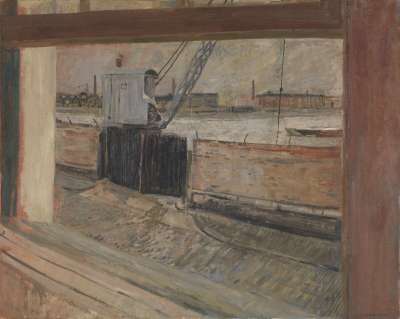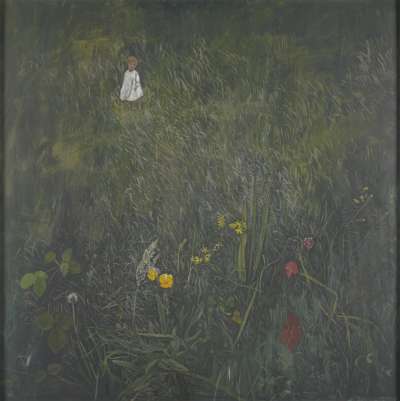(18 February 1927 - 6 August 2008)
Jean Cooke was born in London and studied at Central School of Arts and Crafts, Camberwell, from 1943 to 1945 and Goldsmiths’ College School of Art from 1945 to 1949. She later studied at the Royal College of Art (RCA) from 1949. At Goldsmith’s, Cooke studied sculpture, a medium that she loved and for which buying materials was much cheaper than oil paints. However after injuring her thumb in a cycling accident, she had to abandon sculpture and returned to pottery, establishing her own pottery studio in Sussex from 1950–53. Around this period she met and married Bratby in 1953. They had four children, one of whom, Jason, is also an artist. Cooke returned to the RCA as a lecturer where she taught painting from 1964 to 1974. Cooke’s first solo exhibition was held at the Establishment Club in 1963. Subsequent solo shows include the Bear Lane Gallery, Oxford (1965), the Moyan Gallery, Manchester (1966), the New Grafton Gallery, London (1971), the Norwich Gallery (1980) and the Sir Hugh Casson Room for Friends, Royal Academy of Arts (1990). She became a Royal Academician in 1972 and continued to exhibit her work in solo and group shows across the UK. A resident of Blackheath in south London for most of her adult life, she was President of the Blackheath Art Society and a member of the Academic Board of Blackheath School of Art in the late 1980s. Cooke’s work is represented in several British public collections including the Tate, the Royal Academy and the Royal College of Art. Included in Who’s Who, Cooke listed her recreations as: 'Ungardening, talking, shouting, walking along the beach’.

